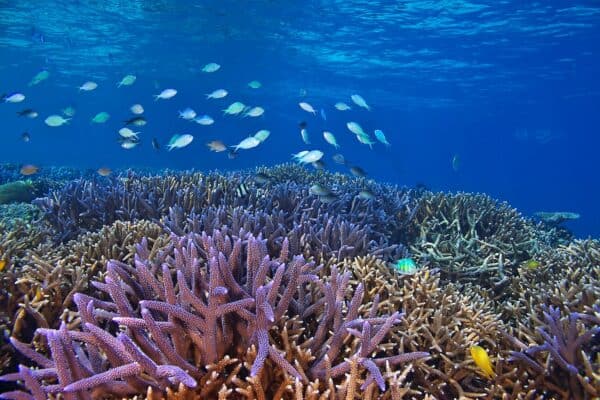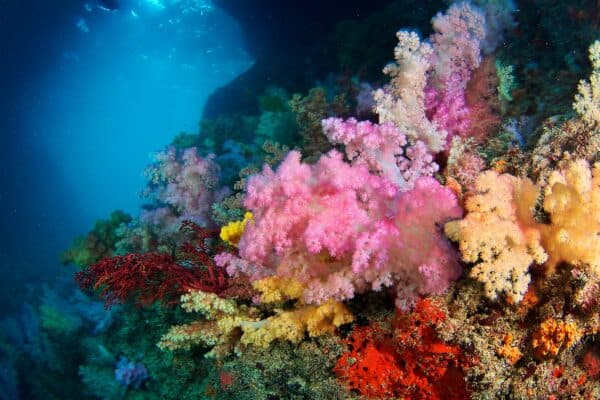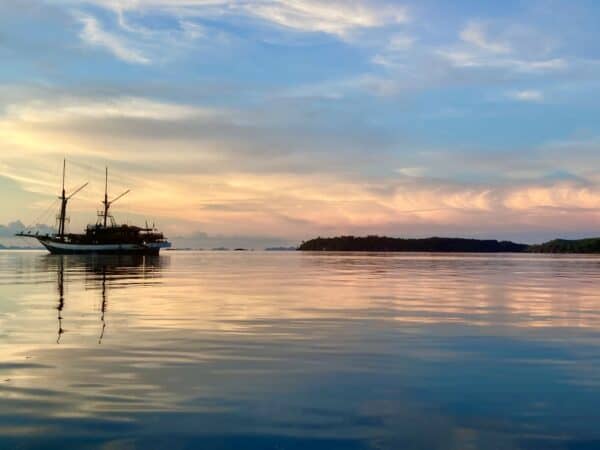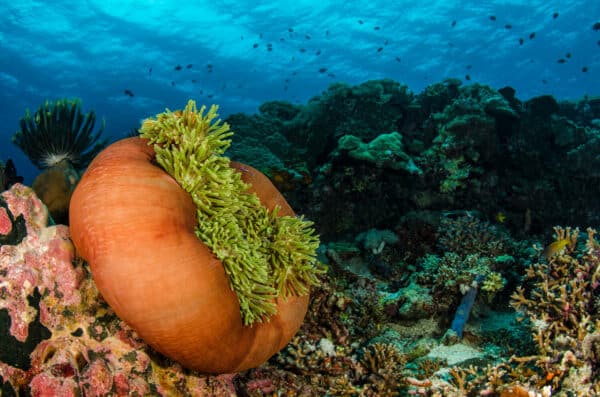About This Trip
- Enjoy daily snorkeling outings on a private boat to the best snorkeling sites in Palau's Rock Islands, such as Big Drop Off, Ulong Channel, and Blue Corner.
- See dazzling hard and soft coral gardens and abundant reef fish.
- Learn about Palau's marine biodiversity, local conservation efforts, and unique cultural history as you explore the islands.
- Enjoy some of the world's best snorkeling!
Palau is a snorkeler's paradise, and our land-based Palau snorkeling trips take you on an in-depth exploration both above and below the water's surface.
Don't miss: 6 Reasons Why the Reefs of Palau are a Must Snorkel
Lying at the southwest corner of the Western Caroline Islands, only nine of Palau's 343 islands are inhabited. Its giant coral lagoon, within one encircling barrier reef, consists of the exposed peaks of an undersea mountain ridge that stretches between Japan and New Guinea. Harboring more species of marine life than any similar-sized area in the world, Palau is one of the best snorkeling sites on the planet. The abundance and diversity of Palau's marine life, its shallow water accessibility and excellent visibility reveal a dazzling array of rainbow-colored fish, sponges, and breathtaking corals. The scenery above water is equally spectacular. The famous Rock Islands are a maze of unsurpassed beauty—tropical gardens atop limestone ridges set in glass-clear waters. From our base in Koror we take easy day-trips to the jungle-capped Rock Islands, to Turtle Cove, Soft Coral Arch, and Ngemelis Wall. Our naturalist accompanies all excursions, providing information on coral reef life, marine ecology, and the natural and cultural history of Micronesia. Our itinerary includes spectacular snorkeling and marine life explorations, as well as leisurely island walks. Palauans excel in crafts, and some of your free time can be dedicated to visiting sites of cultural significance.
Don't miss: Stunning Photos From Snorkeling Expedition Showcase Palau's Amazing Reefs
Palau Snorkeling Trip Wildlife Highlights
Our focus for this trip is on the underwater inhabitants of Palau's pristine coral reefs, including colorful soft and hard corals, sponges, anemones, sharks, sea turtles, giant clams, cuttlefish, octopuses, manta rays, colorful nudibranchs, the endemic Palau nautilus, abundant tropical fish including anemonefish, gobies, cardinalfish, wrasses, parrotfish, groupers, triggerfish, mandarinfish, and much, much more. We also keep an eye out for birds and may see kingfishers, Pied Cormorants, and other species.
Note on Trip Costs
Trip prices do not include international airfare. There is a single supplement fee of $950. Click here for our full expedition terms and conditions.
click to expand
Conservation Impact
Founded in 1969, Oceanic Society is America’s oldest 501(c)(3) nonprofit organization dedicated to ocean conservation. As pioneers of “eco travel,” our expeditions have been designed to directly support our mission. They not only positively impact our travelers, but also the people, places, and wildlife we go to see. A portion of your trip fees for this expedition will support our non-profit partner Micronesian Shark Foundation, which facilitates the study of sharks throughout Micronesia, particularly in Palau, and provides science to support shark protection in Micronesia and beyond. Oceanic Society has led multiple trips per year to Palau and Micronesia since 1998, generating thousands of dollars in park fees that support the protection of Jellyfish Lake and the Rock Islands, both part of the Rock Islands Southern Lagoon UNESCO World Heritage Site.
Dates & Prices
Itinerary
Day 1: Arrive in Koror, Palau (corresponds to the first day of the trip dates you select)
On this day you will need to arrive in Koror (Palau) so that you can start your in-water activities the following morning (Day 2). Most travelers will need to leave at least one day earlier, as you will cross the International Date Line on the flight to Palau. Upon your arrival, you will be picked up and transferred to your comfortable hotel.
Days 2 thru 7: Snorkeling the Rock Islands
The total reef complex of Palau—the fringing reefs, the outer barriers, and the varied communities within the tiny coves and marine lakes—has been described as one superorganism. The reef is riddled with hundreds of tiny mushroom-shaped islands dressed in tropical foliage that are known as the Floating Gardens or Rock Islands. These jungle coated limestone mounds rise straight up from the water, their bases eaten away by wave action and shellfish. Our days will be spent snorkeling and investigating the protected reefs of the Rock Islands, as well as the outer reef walls of the barrier reef by boat. A typical day starts with early morning breakfast and a short, private bus ride to the dock to catch our private boat for the day's adventure. Weather will determine the order of our itinerary. Most snorkeling and natural history sites are within a 20 to 60 minute boat ride from our dock. We may visit as many as 6 different snorkeling spots in the course of a day. We will have daily lunch and siesta breaks at some of the many isolated beaches of the Rock Islands, and all the lunch spots do have bathrooms. We return to our hotel around 4:00 to 5:00 PM each day.
Day 8: Koror
On our final day we will explore the city of Koror, traveling by van on a guided excursion. Highlights will include visits to the Belau National Museum, a woodcarving center, and the only remaining traditional "bai," the ancient, men's meeting house.
Day 9: Koror, Departure
Catch your return flight from Koror (most flights depart at midnight). For passengers traveling the U.S. most flights will go to Honolulu via Guam, crossing the International Date Line and arriving in Honolulu in the evening of the previous day.
Accommodations
On this expedition, we stay in double-occupancy hotel rooms at the highly-rated Cove Resort while making day trips throughout the Rock Islands by private boat. Optional hotel/room upgrades are available. Our naturalist will be along to provide information on marine ecology, conservation, and the natural and cultural history of Micronesia.
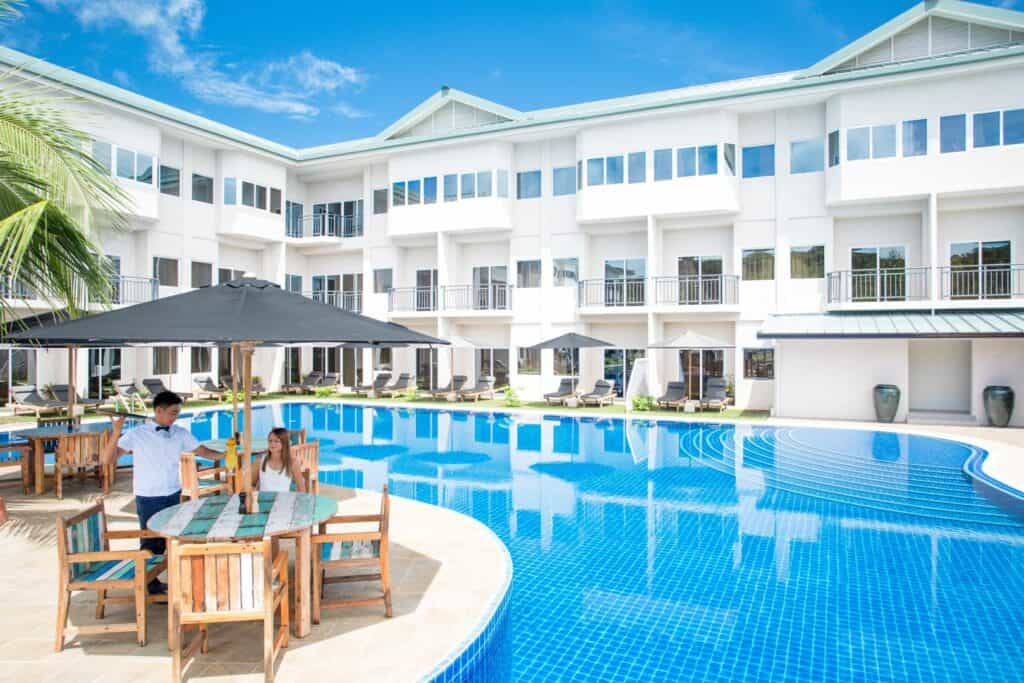
The pool area at the Cove Resort.
Naturalist(s)
Your expedition will be led by one or more of the following expert naturalist guides:



